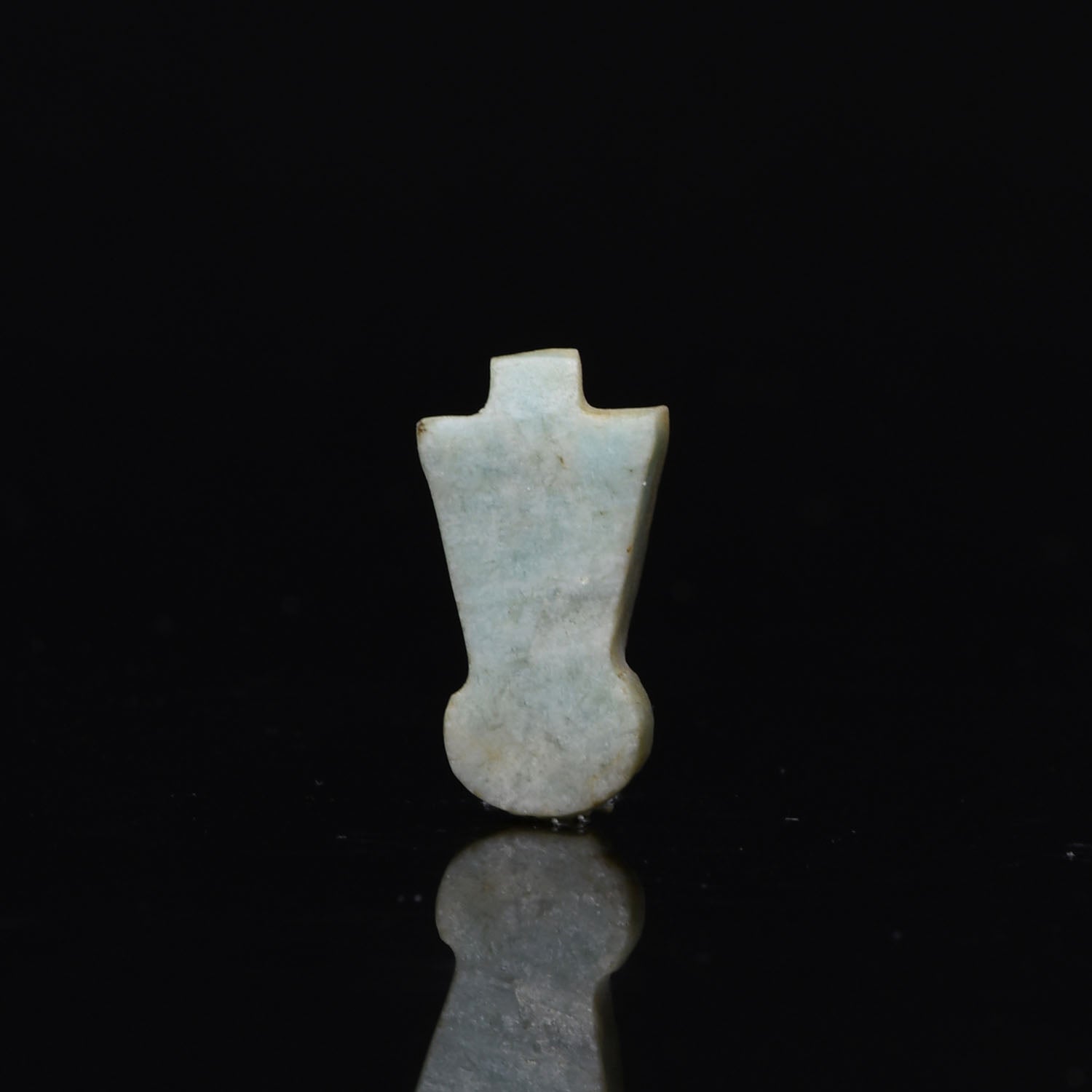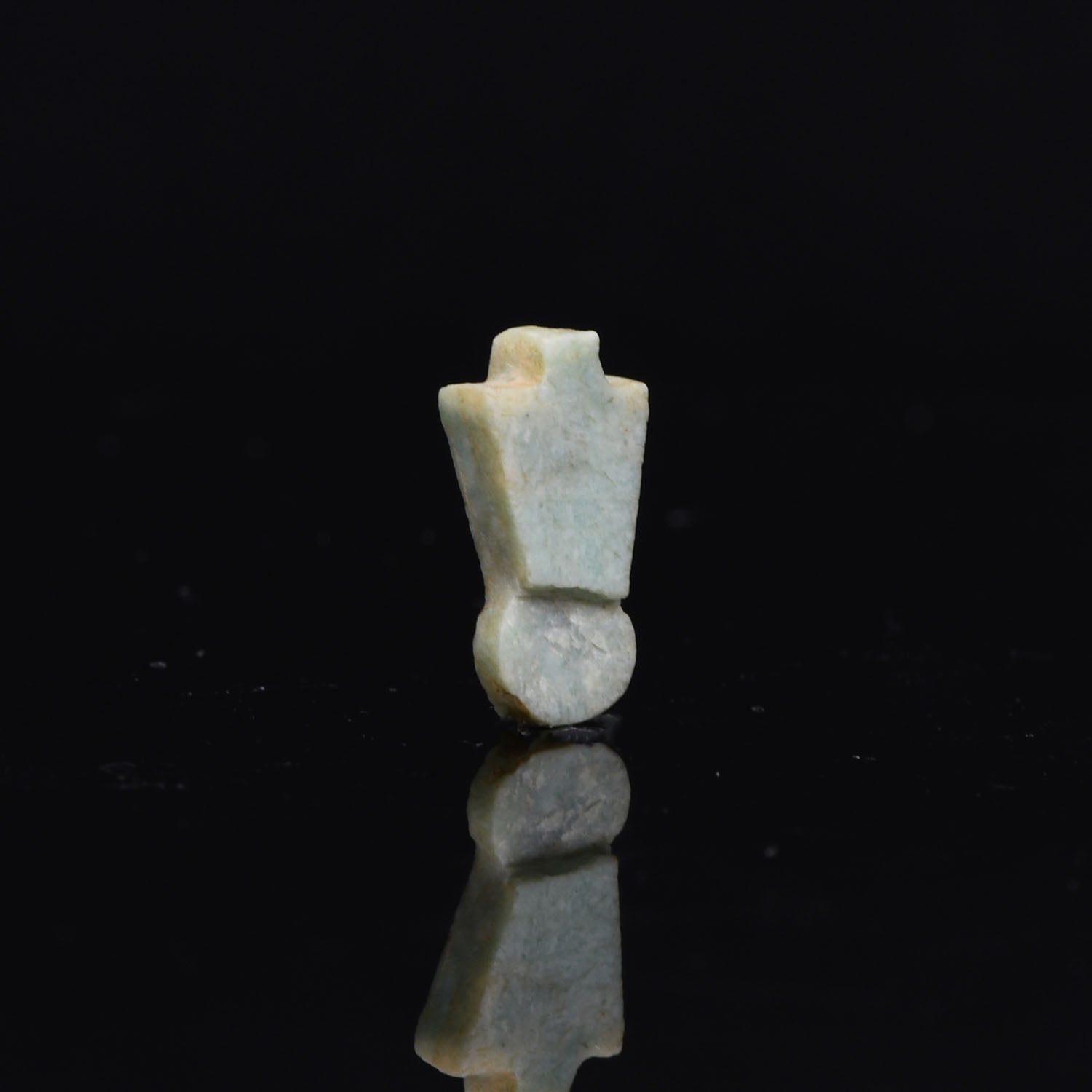

An Egyptian Feldspar Counterpoise Amulet, Late Period, ca. 664 - 332 BCE
This object qualifies for free USA shipping and a flat rate fee of $60 if shipping internationally.
The pale green mottled feldspar amulet in the form of a necklace counterpoise, with a triangular body ending in a semicircle and a faux suspension loop at the top.
The menyet was a form of collar particularly associated with the goddess Hathor. It was composed of multiple bead strings, which required, as did all heavy collars, that a counterpoise be worn between the shoulder blades to counterbalance its weight and help it lie correctly over the chest. The counterpoise to the menyet collar was always pendulum shaped and began to appear as an amulet at least as early as the Ramesside Period, continuing until the end of the Ptolemaic Period.
Dimensions: Length: 1.7 cm (0.66 inches)
Condition: With a very minor loss to the back, overall in good condition.
Provenance: Private collection of Geoffrey Metz, Egyptologist, Sweden, acquired in the 1990s.
QUESTIONS? Just click the Contact Us tab on your right.
We ship Tuesday to Friday with FedEx and usually same day if your order is received before 2pm. Within the continental USA, packing, shipping and insurance is free. Depending on size and destination, delivery times range from one to five business days.
For overseas shipments we charge a small flat rate which includes packing, preparation of all customs paperwork, insurance and carrier fees in compliance with all USA and International customs requirements.
Overseas shipments are sent using FedEx International priority but contact us if you have a shipping preference. International customers are responsible for all duties and taxes.
Sands of Time provides a lifetime, unconditional guarantee of authenticity and provenance. Every object you purchase from us is accompanied by a Certificate of Authenticity, stating culture, provenance, and age.
Furthermore, we conduct due diligence to ensure the item, to the best of our knowledge, has not been illegally obtained from an excavation, architectural monument, public institution, or private property. Wherever possible, reference is made to existing collections or publications.Wherever possible, reference is made to existing collections or publications.
Choose options






